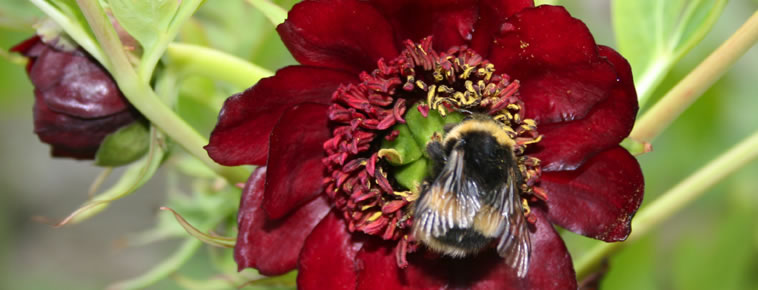
AUTUMN & WINTER AT CLUNY
THIS IS A GENERAL SHEET ABOUT THE GARDEN IN WINTER. THERE IS ALSO ONE ON THE MORE PROMINENT TREES WITHIN THE GARDEN.
Red Squirrels & other mammals
The Red Squirrels should be relatively easy to see over the autumn and winter months. In the morning they are very active around the feeders close to the car park and at the large Wellingtonia (Sequoiadendron giganteum at No 5). We supply them with peanuts, hazelnuts and walnuts in their shells and sunflower seed. As we go further into winter there is less for them to eat in the garden but in the afternoons they can frequently be seen digging up the bits and pieces they buried a few weeks previously! Away from the feeders, stopping, listening and quietly watching usually results in a squirrel being seen. Other mammals present in the garden are speedy stoats, the occasional pine marten and good numbers of voles and wood mice.
Birds
Not only are the red squirrels well fed but so are the woodland birds. The feeders are regularly frequented throughout the winter by hordes of chaffinches, great, blue and coal tits, goldfinches, siskins, robins, great spotted woodpeckers, dunnocks, blackbirds, nuthatches and robins. Less frequent are long-tailed tits, bramblings and jays. Other birds found in and around the garden are mistle thrush, jackdaw, wood pigeon, buzzard, sparrowhawk, treecreeper, bullfinch, wren and goldcrest. Redwing flocks remain until they have finished all the berries of various Sorbus species.
Cluny’s Trees
Visitors often say that it is at this time of year when the trees, particularly the conifers, stand out in the garden. Needless to say our 2 massive Wellingtonia or Sequoiadendron giganteum are always dominant but look even more impressive after a fall of snow. Look out for all the different colours and textures of the many different barks in the garden. There is also a good variety of cones some still on the trees.
Cardiocrinum giganteum (Giant Himalayan Lilies)
The impressive looking dead stalks in the garden are the seed heads remaining from the flowering stalks of Giant Himalayan lilies which flowered in June-July. The pods ripen in December/January and each capsule begins to open gradually releasing seed when there is a breeze. The seed spreads around the garden but it will be about 7 years before a flowering sized bulb is produced. The stalks provide a different architectural interest to the garden throughout the year and visitors are always amazed that this plant comes from a bulb.
The end of autumn
There are still colourful leaves either on the trees or on the ground until mid- November along with fluffy seed heads on the Chinese Ragwort and Ligularia. Remaining well into November are colourful berries on the spindle trees, as well as some of the paler coloured rowan berries and the Himalayan honeysuckle, all important food for birds.
The start of spring
Although some may say the garden is asleep over winter, it isn’t really! Early bulbs such as snowdrops and snowflakes are already pushing through the ground. Racemes of flowers are present on the Mahonias and flower buds are present on the early primulas, rhododendrons and hellebores.
Winter Work
The big autumn job of leaf collecting lasts for around a month from mid-November to mid-December so you will see various containers around the garden holding around 3 different years of leaf mould. Seed sowing of around 200 different species goes on over the late autumn & winter. There is always plenty of cutting back and thinning out of branches to be done in a woodland garden. Some dead or dying wood is retained for the benefit of invertebrates and bird-life. Occasionally winter weather will bring down trees and large branches making our life more difficult but making the decision about which tree to take out next much easier! On wet days seed is put into packets for sale either by post or from the garden in the spring.
All other plants are left to the vagaries of nature and the weather although most have a covering of leaves to protect them and sometimes snow of course! On mild days, the long process of cleaning up of beds will begin in time for spring.
We hope you have enjoyed your visit during a more unusual time of the year. It would be good to see you again perhaps in a different season.
FOR A 2023 SEED LIST, PLEASE LEAVE YOUR EMAIL ADDRESS.
IF YOU HAVE ENJOYED YOURSELF PLEASE LET OTHERS KNOW ABOUT THE GARDEN AS WE WOULD LOVE MORE VISITORS! JOHN & WENDY & FIONA
